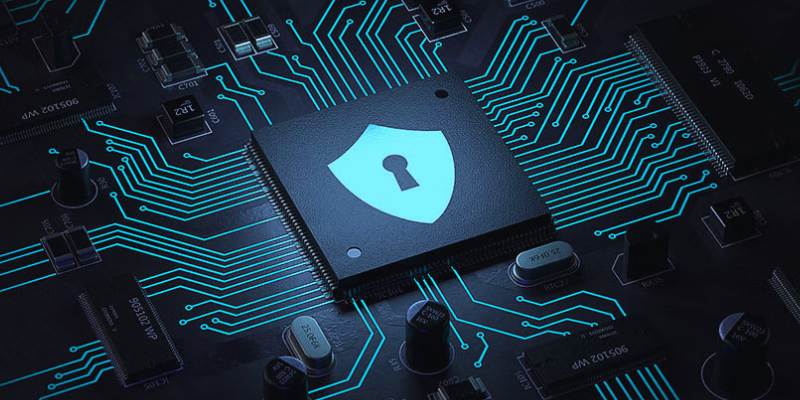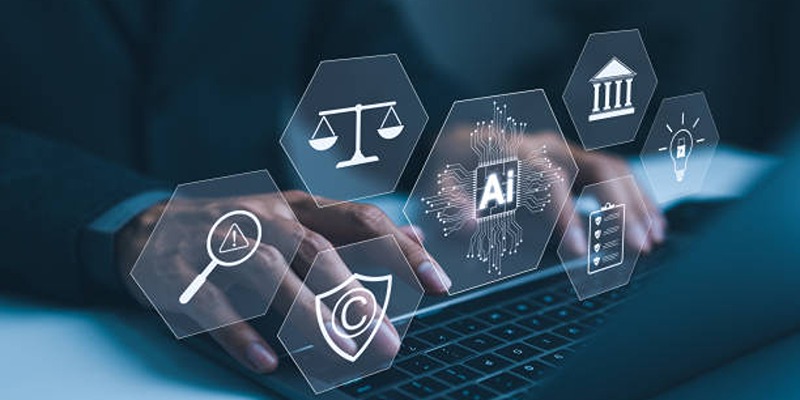Advertisement
Edge computing and artificial intelligence are changing the way our fast-moving society operates. While edge computing handles data near where it is gathered, artificial intelligence lets devices make smart decisions. Taken together, they speed up and simplify systems. These advantages do, however, also bring fresh security concerns. Attack on data at the edge might be simpler.
Users and businesses must be quite upfront about the hazards. Safeguarding edge computing systems and artificial intelligence requires careful design and powerful technologies. This article will discuss the main difficulties and actual remedies. Learning about these subjects helps individuals better guard their data and devices. Let's investigate the reasons behind the great relevance of edge computing security and artificial intelligence nowadays.

From gathered data, artificial intelligence—AI—helps machines think, learn, and make decisions. It lets machines and computers carry out jobs often requiring human intellect. Conversely, edge computing shifts data processing closer to the point of creation. Edge devices process data close by rather than forwarding all of it to a far-off cloud server. This method speeds up answers, saves important time, and lessens the need for continuous internet connectivity.
Smart gadgets, including cars, home assistants, medical equipment, and manufacturing machinery, can make real-time decisions. Artificial intelligence can be combined with edge computing, eliminating the need to wait for cloud servers. These technologies, taken together, offer great advantages in terms of speed, efficiency, and convenience. However, they also create fresh security issues. Data stays closer to consumers, and more devices are engaged, so there are more areas where attackers might try to enter.
Below are the key security challenges in AI and edge computing that users and businesses must understand to stay protected.

Below are practical solutions that can help strengthen AI and edge computing security against growing cyber threats today.
AI and edge computing offer amazing speed and intelligence but bring serious security risks. Protecting these systems demands strong encryption, regular updates, and careful AI model protection. Strengthening network security and improving physical defenses are also critical steps. Using zero-trust strategies helps limit damage even if attackers get in. Users and businesses must stay alert and invest in the best security measures available. As technology grows, so will the threats. Preparing now can prevent big losses later. Securing AI and edge computing today ensures a safer, smarter world for tomorrow's fast-moving digital society.
Advertisement

Wish you had a smarter way to learn games or create images? ChatGPT’s “My GPT” bots can help you do all that and more—with no coding or tech skills required

Want a smarter way to trade stocks in 2025? These AI tools help you find strong setups, cut out the noise, and make more informed moves with less effort

Heard about Grok but not sure what it does or why it’s different? Find out how much it costs, who can use it, and whether this edgy AI chatbot is the right fit for you

Ever wished you could get text, images, and videos all at once? REKA CORE makes it happen by bringing everything into one seamless response for easy access to multimedia content

Want to make ChatGPT work better for you? Check out the five most effective ways to use custom instructions and personalize your chats for smarter responses

Trying to manage project timelines more easily? Learn how to create clear, customizable Gantt charts in Python with Matplotlib and Plotly, no expensive tools needed

Learn why exploding interest in GenAI makes AI governance more important than ever before.

Applying to the Big 4? Learn how Overleaf and ChatGPT help you build a resume that passes ATS filters and impresses recruiters at Deloitte, PwC, EY, and KPMG

Looking for the right dataset? Learn how ChatGPT can help you select, refine, and evaluate datasets for your data project or AI model

Tired of endless searching and clicking? See how LangChain and Google Search API can automate web research and deliver real results without the hassle

Enhance your ChatGPT experience by using the Wolfram plugin for fact-checking, solving STEM tasks, and data analysis.

Learn here key security challenges and practical solutions for protecting AI and edge computing systems from cyber threats